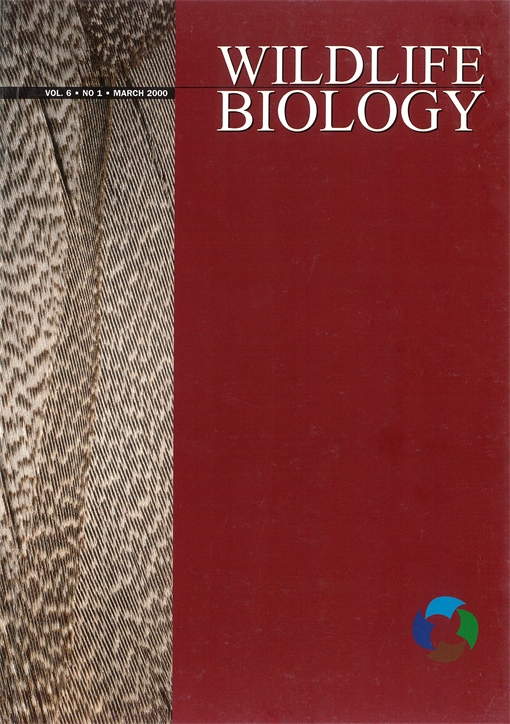An alternative to the so-called ‘marker substance’ method used to estimate daily food intake in geese is presented. Based on the assumption that a grazing bird takes one leaf per peck, the daily food intake rate can be calculated by multiplying mean bite weight, peck rate and total daily foraging time. Wintering pink-footed geese Anser brachyrhynchus feeding on pastures and winter wheat fields were collected and samples of leaves in the oesophagus were measured, dried and weighed individually. We measured leaf lengths in unexploited areas of the same fields upon which geese had been feeding. Peck rates of winter wheat feeding geese were measured. Daily foraging time was obtained from observations of activity budgets of flocks of geese. Daily food intake of winter wheat feeding geese was estimated at 159–229 g ash free dry weight (AFDW) during late winter and at 188–212 g AFDW in early spring. For geese feeding on pastures in early spring food intake was estimated at 170 g AFDW. Averages were generally in accordance with estimates derived by the ‘marker substance’ method. Bite length was positively related to primary leaf length of winter wheat, suggesting that geese adjust bite size to available leaf lengths. There was a negative relationship between peck rate and length of all leaf types, but the relationship was only significant for primary leaves. Based on the assumption that bite length was identical to primary leaf length and the relationship between primary leaf length and peck rate, a quadratic relation between primary leaf length and instantaneous intake rates was derived, yielding a peak intake rate of 0.62 g AFDW min-1 at a primary leaf length of 8.4 cm. In the beginning of the winter, bite lengths were close to this optimal leaf length, but decreased during winter.
How to translate text using browser tools
1 September 2000
Assessment of food intake rates in pink-footed geese Anser brachyrhynchus based on examination of oesophagus contents
Ole R. Therkildsen,
Jesper Madsen

Wildlife Biology
Vol. 6 • No. 3
2000
Vol. 6 • No. 3
2000
Anser brachyrhynchus
feeding energetics
food intake
geese
herbivory
pink-footed goose




